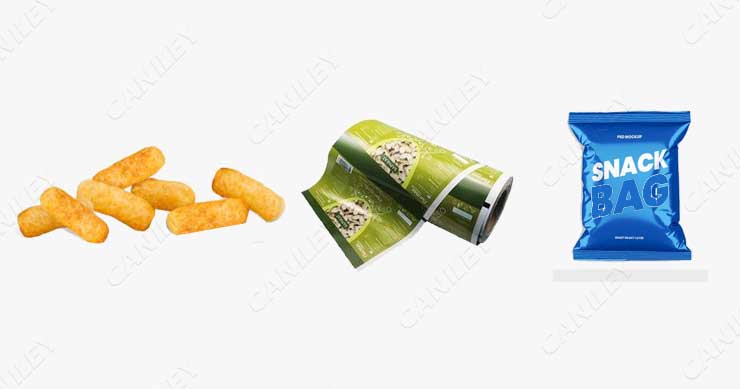Snacks are gradually becoming a necessity of daily life. With the development of the economy and the improvement of consumption levels, consumers’ demand for the quantity and quality of snack food is increasing. The frequency of use of snack food packaging has also risen sharply.
However, since many snacks are fried foods, which contain a lot of fat and protein, preventing snacks from being crispy and other issues is a key concern of many manufacturers. Composite packaging materials are the most commonly used materials.
The structure of these snack packaging materials generally includes PET, BOPP, VMPET, PE, etc. The packaging material is suitable for various dried fruits, snack foods, and other products. No poison or special smell, in line with national health standards.

Composite snack packaging materials have the following advantages:
- Has a good product protection effect. There are many kinds of composite packaging materials, and there can be many kinds of composite combinations. Including plastic-plastic composite, paper-plastic composite, aluminum-plastic composite, etc. Through different composite combinations, it can meet the packaging strength, sealing, oxygen barrier, water barrier, light barrier and other requirements of different foods. For example: a kind of snack packaging material is OPP/aluminum/PE. Among them, OPP guarantees the strength of the material and the printing effect of the packaging, etc. Aluminized material has good oxygen blocking, light blocking and other effects. the PE layer acts as a heat sealant.
- the printing effect of composite packaging materials is good, and the shelf display effect is good.
- composite film packaging materials are suitable for mass production and automated packaging.
- low cost and light weight.
In addition, in order to ensure that the snacks are not easily oxidized or crushed, the manufacturer will fill the interior of the package with nitrogen (N2). Rely on N2, an inert gas, to eliminate the presence of O2 inside the package. If the packaging material used has poor barrier properties to N2, or the sealing is not tight, it is easy to change the content of N2 or O2 inside the packaging, so that the nitrogen-filled packaging cannot protect the snacks.
Related Products:
